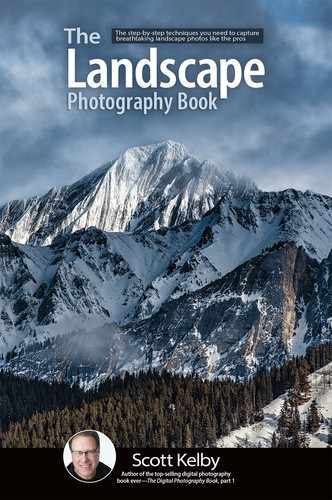In Every Landscape Photographer’s Bag: A Circular Polarizer

You’ll need one of these filters for two reasons. The first is to cut through reflections. This is actually its main job—to cut through reflections in water and streams and such, and it does a terrific job (kind of like putting on a pair of sunglasses—they cut the glare big time). The second is to make a washed-out sky look darker and more blue. That’s when the circular part comes in handy, because you can rotate it to choose how much polarization you want, especially helpful when shooting the sky or reducing reflections in water (you don’t always want to remove all the reflections in water, so this lets you see a preview as you rotate—just stop rotating when it looks good to you). If you’re shooting the sky, you’ll get the best results when you’re shooting at a 90° angle to the sun. Otherwise, you won’t get nearly as much effect from the filter. There’s an old trick that helps you determine exactly where the filter will make the most difference: Take your hand, position it like you’re making a pretend gun (like you did when you were a kid, or when you were posing for the cover of a Charlie’s Angels movie poster), then point your fake gun at the sun, turn your hand sideways (either to the left or right), and your thumb will be aiming at the best spot for you to shoot from for maximum effect from your polarizing filter. By the way, while this has nothing to do with landscapes, I also use a polarizing filter to cut the reflection in car windows when I’m doing automotive shoots, and you can’t believe the difference it makes.
